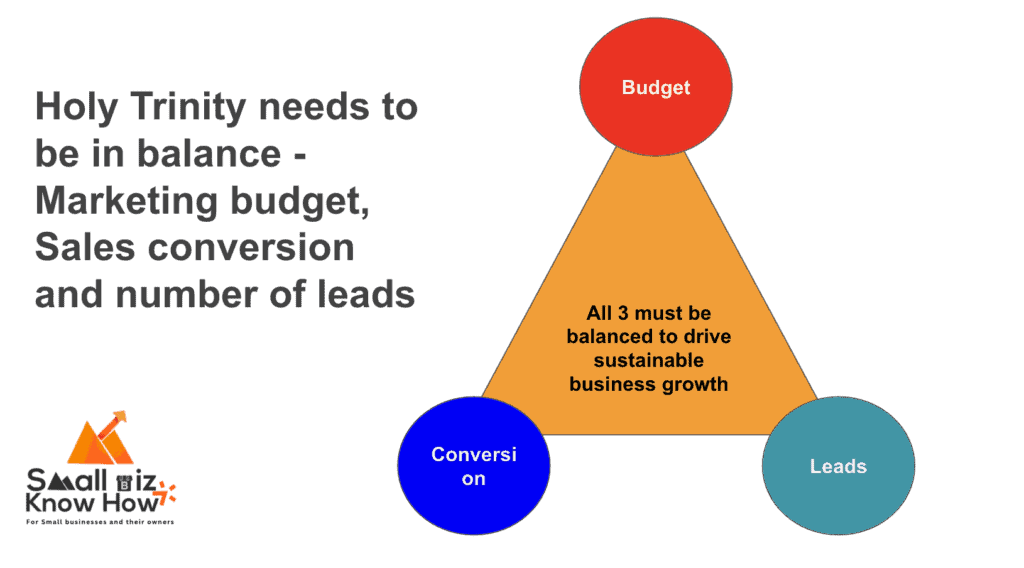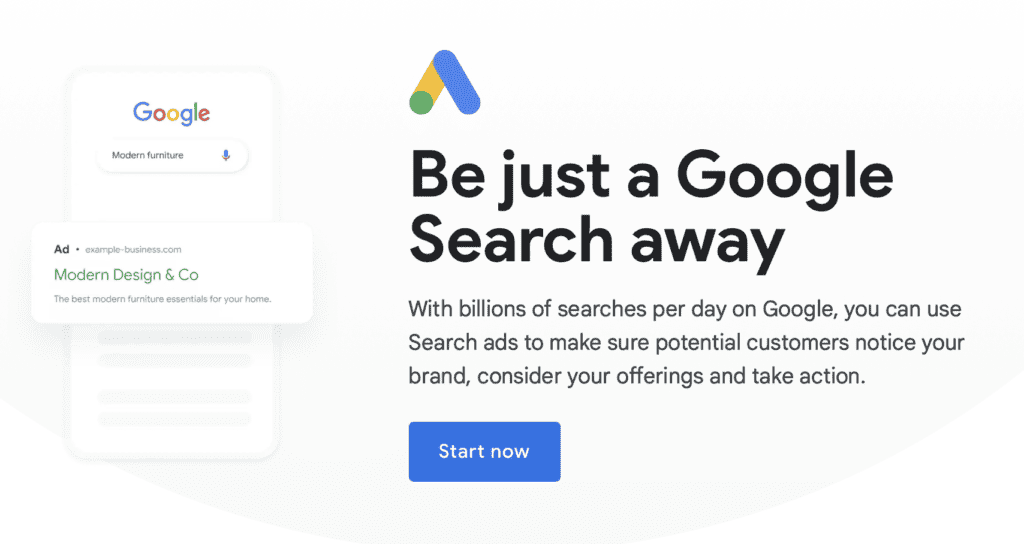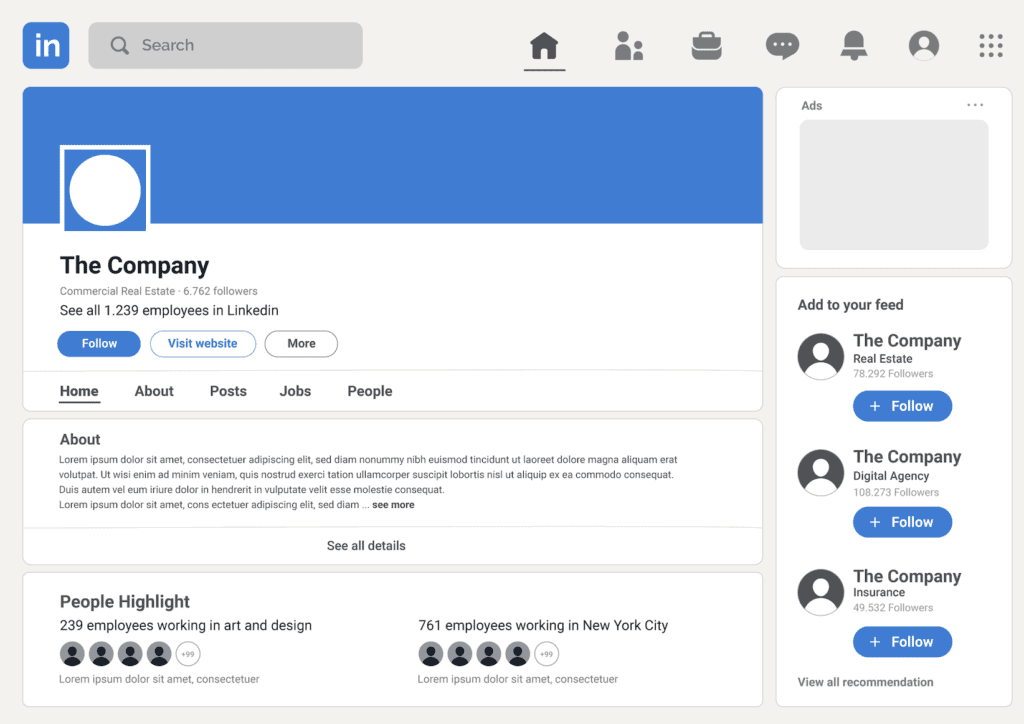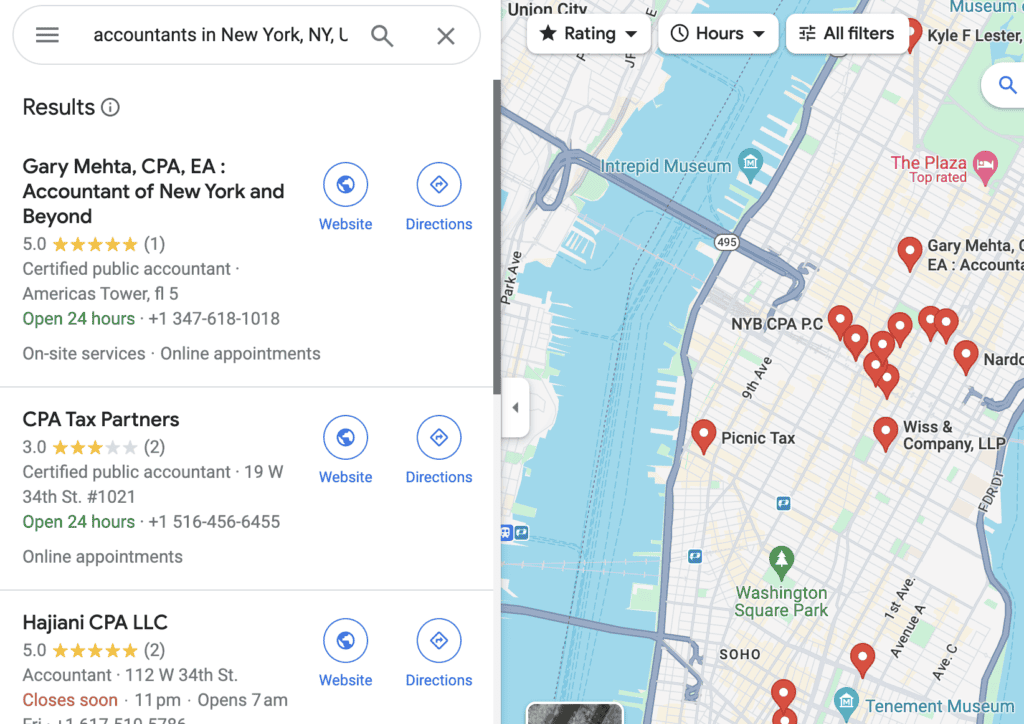In a recent discussion with a business owner friend, the topic of B2B lead generation was center stage.
As small businesses strive to carve a niche in the competitive market, understanding the dynamics of effectively generating B2B leads is paramount.
This comprehensive guide aims to unfold various strategies and tools that small businesses can utilize to not only generate leads but also convert them into long-term business relationships.
From leveraging powerful platforms like LinkedIn and Google Ads to exploring free resources and innovative techniques, we will delve into creating a robust framework for B2B lead generation.
Join us as we navigate through the essentials of generating valuable leads that can drive business growth and sustainability.
Introduction to B2B Lead Generation

B2B lead generation is no longer confined to traditional networking and cold calls. In today’s digital age, the landscape of generating leads has vastly expanded, offering numerous untapped avenues beyond conventional methods.
As businesses evolve, so do the techniques to attract and engage potential clients in meaningful ways. This introduction aims to broaden your perspective on B2B lead generation, highlighting innovative channels and strategies that can transform how you connect with your business counterparts.
Embrace the journey of discovering creative and effective methods to enrich your lead generation toolkit, propelling your business into new realms of opportunity and growth.
Strategies to Generate B2B Leads Online
In the digital realm, the strategies for generating B2B leads are diverse, each tailored to specific business contexts and objectives.
Here, we explore a variety of online avenues, providing a table to guide you in selecting the optimal strategy based on your unique business situation:
| Strategy | Best For | What to do |
|---|---|---|
| Content Marketing | Long-term engagement, free leads over time | Create and share valuable content to attract and engage leads |
| SEO Optimization | Organic search visibility & search rankings | Enhance your website’s visibility on search engines to capture interest |
| Social Media Engagement | Brand awareness and relationship building | Use platforms like LinkedIn to interact directly with potential clients |
| Email Marketing | Direct and personalized communication | Send targeted messages to segmented audiences to build interest and loyalty |
| Webinars and Online Events | Establishing thought leadership | Host events that provide valuable insights and attract a professional audience |
| Pay-Per-Click Advertising | Quick lead generation | Utilize ads on platforms like Google to drive traffic to your offerings |
| Affiliate and Partner Programs | Expanding reach through networks | Collaborate with other businesses to cross-promote and generate leads |
Each of these strategies opens different pathways to generate leads. For instance, content marketing and SEO are excellent for building a sustainable presence, while PPC and social media can provide quicker, albeit sometimes less qualified, leads.
The choice of strategy should align with your marketing goals, available resources, and the buying behavior of your target audience.
Utilizing Google Ads for B2B Lead Generation

Utilizing Google Ads for B2B lead generation can be a powerful strategy. Below are detailed steps on how a business can effectively use Google Ads:
- Objective Setting: Define what you aim to achieve with your Google Ads campaign, such as increasing leads, downloads, or sign-ups.
- Keyword Research: Use tools like Google Keyword Planner to find relevant keywords that your potential B2B customers might use when searching for your services. Focus on keywords that indicate buying intent or specific interest in your industry.
- Campaign Structure: Organize your keywords into well-structured ad groups. Each group should focus on a specific theme or product offering, which helps in tailoring the ad copy and landing pages effectively.
- Ad Copy Creation: Write compelling ad copy that clearly states the business value your product or service offers. Include strong call-to-actions (CTAs) and benefits that appeal to B2B buyers.
- Landing Page Optimization: Ensure the landing page is directly relevant to the ad. It should provide the information promised in the ad and include a clear, straightforward path to conversion (e.g., a contact form, download button, or sign-up sheet).
- Bidding Strategy: Decide on a bidding strategy that matches your budget and goals. For B2B, focusing on conversions or conversion value might be more beneficial than clicks, as quality leads are more valuable than sheer traffic.
- Monitoring and Optimization: Regularly review the performance of your ads. Use A/B testing for your ad copy and landing pages to determine what works best. Adjust bids, refine keywords, and optimize ad copy based on the data collected.
By following these steps, businesses can effectively target and capture high-quality B2B leads through Google Ads, ensuring each dollar spent contributes to valuable customer engagements.
The Power of LinkedIn in B2B Lead Generation

LinkedIn is a powerhouse for B2B lead generation, even without the Sales Navigator tool. Businesses can leverage LinkedIn effectively by:
- Optimizing Profiles: Ensure that both the personal and company profiles are fully optimized with detailed information about services, unique selling propositions, and industry relevance.
- Content Sharing: Regularly post insightful content related to your industry. This can include articles, thought leadership pieces, company updates, and more to engage with your network and attract new connections.
- Engagement: Actively engage with the content posted by your connections, industry leaders, and potential clients. Commenting, liking, and sharing content helps to increase visibility and establish credibility.
- Advanced Search: Use LinkedIn’s advanced search feature to find potential leads by filtering by location, industry, current company, and even recent activity. This can help you identify the most relevant professionals.
- Groups: Join LinkedIn groups where your target audience is likely to participate. Engage genuinely in these groups to build relationships and increase your visibility.
Using Sales Navigator as a powerful feature in LinkedIn
Sales Navigator is a specialized tool designed to enhance lead generation efforts on LinkedIn. Here’s how to use it effectively:
- Lead Recommendations: Utilize the lead recommendation feature, which uses algorithms to suggest potential leads based on your saved preferences and past activities.
- Advanced Filtering: Sales Navigator offers advanced filtering options that go beyond the basic LinkedIn search. You can target leads based on more specific criteria like function, seniority level, and company size.
- InMail: With Sales Navigator, you have increased InMail credits allowing you to reach out directly to decision-makers without needing a prior connection.
- Lead Tracking: You can track leads and companies to receive alerts on job changes and company developments, which can be pivotal for timing your outreach.
- Integration Tools: Sales Navigator can be integrated with CRM tools to streamline the lead management process, ensuring that all lead interactions are tracked and capitalized on.
By combining both standard LinkedIn features and Sales Navigator tools, businesses can create a comprehensive strategy for generating high-quality B2B leads effectively.
B2B Leads Database: Leveraging Data for Sales
Every business should strive to build a b2b database of potential customers over time. This database can become a strategic asset over time. I am outlining some best practices that you can follow
Data Accuracy and Updates: Regularly update and verify the information in your database to maintain its accuracy and relevance. This can be done through automated data cleansing tools or manual checks.
Segmentation: Categorize your leads based on relevant criteria such as industry, company size, or purchase history. This allows for more targeted marketing efforts and personalized communication.
Compliance with Regulations: Ensure your data collection and management practices comply with privacy laws such as GDPR or CCPA. This includes obtaining proper consents for data collection and providing leads with an option to opt-out.
Security Measures: Implement strong security protocols to protect your database from breaches. This includes secure access controls and encryption.
Companies Offering B2B Leads Databases
Several companies offer B2B leads databases for purchase. Some notable providers include:
- ZoomInfo: Known for its extensive database of B2B contact information.
- Dun & Bradstreet: Offers detailed company reports and analytics alongside leads.
- UpLead: Provides high-quality leads with options for real-time email verification.
Privacy Concerns and Guidelines
While you build these databases, there are some privacy concerns you must heed and have mitigation plans ready.
Transparency: Be transparent about how you collect, use, and store data. Clearly communicate this in your privacy policy.
Consent: Always try and obtain consent before adding new contacts to your database, especially in regions with strict data protection laws.
Data Minimization: Only collect data that is necessary for your purposes, avoiding excessive data collection that can increase liability and security risks.
Using these practices and guidelines, businesses can effectively manage a B2B leads database while adhering to legal standards and ethical considerations.
Free Resources to Generate B2B Leads
Read this detailed walkthrough on how you should sustainably generate free leads.
For quick tips, here are the resources using which a business can generate b2b leads
| Resource | Best For | Limitations |
|---|---|---|
| Google Maps | Local business discovery and contact info | May lack detailed B2B-specific data; relies on public info |
| Networking and direct outreach | Limited features without premium plans; best with networking | |
| Crunchbase | Finding startup and company data | Free tier offers limited data; more depth requires paid plan |
| AngelList | Startup and investor information | Primarily tech-focused; limited scope outside startup sphere |
| Trade Shows Websites | Industry-specific leads | Attendance info often not public; follow-up can be challenging |
| Facebook Groups | Niche communities and networking | Requires active engagement; can be time-consuming |
These resources can greatly aid in B2B lead generation, although they come with varying limitations that businesses need to navigate.
For instance, while Google Maps is excellent for obtaining contact information and discovering local businesses, it may not provide the depth of data specifically tailored for B2B contexts like some more specialized platforms.
Crafting Effective B2B Lead Generation Campaigns
When crafting effective B2B lead generation campaigns, businesses should consider several key factors:
- Target Audience Identification: Clearly define who your ideal customers are. Understanding their needs, industry, and decision-making process is crucial.
- Value Proposition: Articulate what sets your product or service apart. This should resonate with your target audience’s specific challenges or goals.
- Multi-Channel Approach: Utilize a variety of channels (email, social media, webinars, etc.) to reach your audience where they are most active.
- Content Strategy: Develop compelling content that addresses your prospects’ pain points and positions your company as a solution.
- Lead Nurturing: Implement a system to nurture leads through the sales funnel, providing relevant information and engagement at each stage.
- Metrics and Analysis: Set clear metrics for success and regularly analyze campaign performance to optimize strategies.
In our last campaign, we dedicated significant efforts to understand our target market’s emerging needs due to recent industry shifts.
After identifying our primary audience segments, we crafted a value proposition that highlighted our unique ability to address these new challenges.
We rolled out a multi-channel campaign, focusing heavily on content-rich webinars and targeted LinkedIn ads, while our nurturing process was bolstered by a series of personalized follow-up emails designed to engage and convert leads at various funnel stages.
Monitoring our key performance indicators, we continually adjusted our tactics to maximize ROI.
Innovative Techniques for Generating B2B Leads

Exploring unconventional techniques for generating B2B leads can unlock new opportunities and widen your business’s reach. Here are a few innovative approaches:
- Podcast Sponsorships: Sponsoring or guesting on relevant industry podcasts can put you in front of a targeted, engaged audience.
- Reverse Engineering: Analyze competitors’ testimonials and case studies to identify and approach their clients who might need additional or different solutions.
- Online Courses and Workshops: Offer free or low-cost courses related to your industry on platforms like Udemy or Coursera to attract professionals looking to expand their skills.
- Gamification: Incorporate interactive elements into your marketing efforts, such as quizzes or challenges that reward participants with industry-relevant prizes or recognition.
- Interactive Tools: Develop free tools or resources that solve common problems for businesses in your target market. For example, a widget or calculator that assists with industry-specific calculations.
These techniques involve channels and methods that aren’t traditionally considered direct lead sources but can effectively generate interest and build relationships leading to B2B sales opportunities.
B2B Lead Generation Example: Case Study
When tasked with generating leads for a SaaS-based accounting tool targeting accountants, I adopted a multi-channel approach that balanced digital and local engagement strategies. Here’s how I structured the campaign:
- Digital Channels:
- Content Marketing: Created SEO-optimized articles and blogs that addressed common pain points in accounting.
- Webinars: Hosted informative sessions on leveraging technology in accounting.
- Social Media: Regular posts and interactive discussions on platforms like LinkedIn and Twitter.
- Local Engagement:
- Coffee Shop Meetups: Informal sessions with local accountants to discuss industry challenges and our solutions.
- Local Association Chamber Talks: Presentations at local chambers to establish credibility and network with professionals.
To illustrate the effectiveness of each channel, consider this table of outcomes:
| Lead Source | Number of Leads | Effectiveness |
|---|---|---|
| Social Media | 300 | Low |
| Content Marketing | 200 | Medium |
| Webinars | 150 | Medium |
| Coffee Shop Meetups | 30 | High |
| Local Association Chamber Talks | 50 | High |
The key takeaway is that while digital channels generated a higher volume of leads, local engagements, though smaller in number, resulted in higher quality leads with a greater conversion potential.
This balanced approach not only widened the lead generation net but also deepened the quality of potential client interactions.
B2B Companies and Lead Generation Dynamics
In the rapidly evolving B2B market, companies are refining their lead generation strategies to adapt to new technologies and changing buyer behaviors.
Traditional methods like cold calling and mass emailing are being overshadowed by more sophisticated, data-driven approaches.
Personalization and Account-Based Marketing (ABM): Personalization is crucial. ABM focuses on targeting high-value accounts with customized campaigns that resonate with specific needs and pain points, significantly enhancing the potential for conversion.
Digital Transformation with AI and Big Data: Many B2B companies are incorporating AI tools to analyze customer data and predict buying patterns. This predictive capability allows for more effective targeting and timing of marketing efforts, thereby increasing efficiency.
Content Marketing and Thought Leadership: Providing valuable content that addresses specific industry issues or advancements continues to be a powerful tool for attracting leads.
Companies that succeed in establishing themselves as thought leaders are seeing higher engagement and conversion rates.
Social Media and Professional Networking: Platforms like LinkedIn are pivotal for B2B lead generation.
However, the focus is shifting towards creating meaningful interactions through insightful content and active engagement rather than just broad advertising.
Interactive and Engaging Formats: Webinars, virtual conferences, and live demos have become more prominent, especially as remote work and digital interaction increase.
These formats offer direct engagement and can generate high-quality leads by demonstrating value up front.
Challenges and Outdated Methods: Techniques such as generic email blasts and broad-spectrum digital ads are becoming less effective due to market saturation and the sophisticated filtering techniques used by potential clients.
Companies need to innovate continuously to keep their strategies effective and relevant.
By embracing these dynamic strategies, B2B companies can not only generate leads more effectively but also build deeper relationships with potential clients, paving the way for sustained business growth.
Automating Lead Generation with AI and ChatGPT
For a non-tech business owner looking to automate lead generation using AI and tools like ChatGPT, the process can be both practical and manageable. Here’s how you can begin:
- Set Clear Objectives: Define what you expect from using AI in lead generation—whether it’s increasing lead volume, improving lead quality, or automating interactions.
- Implement ChatGPT on Your Website: Integrate ChatGPT as a chatbot on your company website. This bot can interact with visitors, answer their queries in real-time, and collect information such as email addresses or specific business needs.
- Train ChatGPT with FAQs: Feed ChatGPT with a list of frequently asked questions and answers relevant to your business. This ensures the bot can handle common inquiries effectively, engaging potential leads until they can be taken over by a human.
- Automate Lead Qualification: Use ChatGPT to pre-qualify leads by asking visitors qualifying questions. For example, the bot can determine the size of the potential client’s business, their budget, or their decision-making timeline.
- Direct Integration with CRM: Connect ChatGPT directly to your Customer Relationship Management (CRM) system. This allows the bot to input lead data directly into your CRM, ensuring no leads are lost and that follow-up can be organized efficiently.
- Regular Updates and Training: Continuously update and train your ChatGPT model with new data and customer interactions to improve its accuracy and relevance over time.
By following these steps, even a non-tech-savvy business owner can effectively automate parts of their lead generation process, making it more efficient and less time-consuming.
This integration not only helps in capturing and qualifying leads but also ensures a smoother transition from lead generation to actual sales.
Measuring the Cost of B2B Leads
Creating an approximate cost per lead table for various B2B lead sources involves considering factors such as channel efficiency, audience targeting, and overall marketing costs. Here’s a simplified breakdown:
| Lead Source | Cost Per Lead (USD) | Explanation |
|---|---|---|
| Content Marketing | $30 – $100 | Costs vary based on content creation and distribution efforts. Video content will increase your cost further unless you shoot, edit and publish on your own |
| SEO | $20 – $80 | Cost effective but depends on competitiveness of keywords. |
| PPC Advertising | $50 – $150 | Directly related to bid prices and competition. |
| Social Media | $30 – $90 | Influenced by ad spend and platform. Increasing spends will not necessarily give you RoI |
| Webinars | $100 – $200 | Includes costs of tools and promotion through followup calls, messages and mails |
| Trade Shows | $200 – $1,000+ | High due to venue, travel, and setup costs. |
| Email Marketing | $20 – $50 | Relatively low, depending on scale and tools used. |
| Direct Mail | $50 – $500 | High variability based on printing and shipping costs. |
| Cold Calling | $30 – $100 | Dependent on labor costs and data sourcing. |
These costs are influenced by several factors:
- Content Marketing and SEO are cost-effective over time but require upfront investment in high-quality content and optimization.
- PPC and Social Media can quickly scale costs based on competition and target market specifics.
- Webinars and Trade Shows often have higher individual costs but can generate high-quality leads.
- Email Marketing and Direct Mail vary greatly depending on the sophistication of campaigns and volume.
It’s essential for businesses to continuously monitor and adjust these strategies based on performance metrics and ROI calculations to optimize lead generation costs.
How to Get Free B2B Leads: Tips and Tricks

As a leader of GTM programs with limited resources for lead generation, I’ve discovered several effective and free methods to gather B2B leads. Here are some practical tips from my experience:
- Google Maps: I’ve utilized Google Maps to find local businesses in relevant industries. By searching for specific business types and viewing their details, I’ve been able to gather contact information directly from their listings.
- Business Directories: Free versions of business directories are invaluable. Websites like Yelp and Yellow Pages offer lists of businesses, including emails and phone numbers. I’ve also explored industry-specific directories that sometimes offer free access.
- Association Membership Directories: Many industry associations publish membership directories. I’ve downloaded outdated versions from their websites, which are often available for free and still contain valuable contact information.
- Social Media Networking: Joining Facebook groups and LinkedIn groups relevant to my industry has allowed me to connect directly with potential leads, participate in discussions, and establish my business presence.
- Content Contribution on Forums: Engaging in forums like Quora or specific industry forums by answering questions and offering advice has helped establish credibility and gather leads through direct engagement.
These strategies require time and effort but minimal financial investment, making them ideal for businesses starting out or those looking to extend their reach without a significant budget.
Challenges in B2B Lead Generation and How to Overcome Them
Based on my experience, I am outlining common challenges in B2B lead generation, why they are challenges, and potential solutions that you as a small business owner can take:
| Challenge | Why It’s a Challenge | Possible Solutions |
|---|---|---|
| High Competition | Many businesses targeting similar audiences with similar offerings | Differentiate your value proposition; focus on niche markets |
| Lead Quality Over Quantity | High volume of leads doesn’t guarantee high quality | Implement lead scoring; focus on targeted marketing strategies |
| Maintaining Data Quality | Outdated or incorrect data can lead to inefficiencies | Regularly update and cleanse your database; use reliable data sources |
| Integration of Sales and Marketing | Misalignment can lead to missed opportunities and inefficiencies | Foster communication and shared objectives; use integrated CRM tools |
| Adapting to Changing Buyer Behaviors | Buyers are more informed and selective | Use analytics to understand trends; personalize marketing efforts |
| Budget Constraints | Limited resources to allocate to lead generation campaigns | Focus on cost-effective strategies like content marketing and SEO |
| Measuring ROI | Difficulty in quantifying the effectiveness of lead generation | Set clear KPIs and use analytics tools to track performance |
These challenges are inherent in the competitive landscape of B2B marketing, but with the right strategies and tools, they can be effectively managed to improve lead generation outcomes.
Future Trends in B2B Lead Generation
The future of B2B lead generation is poised to be shaped significantly by advancements in technology and shifts in business practices. Here are a few predictions on how these trends might evolve:
- Increased Use of AI and Machine Learning: AI is expected to further automate lead scoring, predict buying behaviors, and personalize marketing at scale. This will allow businesses to target leads more effectively and streamline their marketing efforts.
- Rise of Account-Based Marketing (ABM): ABM will continue to grow as companies seek more targeted and efficient ways to engage high-value accounts rather than broad-based marketing.
- Integration of Advanced Analytics: Enhanced analytics will provide deeper insights into lead behavior, enabling marketers to craft more effective campaigns based on data-driven decisions.
- Virtual and Augmented Reality: As VR and AR technologies become more accessible, they could revolutionize how products are demonstrated to potential clients, especially in industries like manufacturing or real estate.
- Blockchain for Transparency and Security: With increasing concerns about data privacy, blockchain could become critical in managing secure and transparent transactions in B2B dealings.
My take on all of these are that the rise of privacy concerns and become a spoilsport in lead generation that depends too much on technology. Going the old fashioned way of building trust, community and driving word of mouth will become more important than ever.
